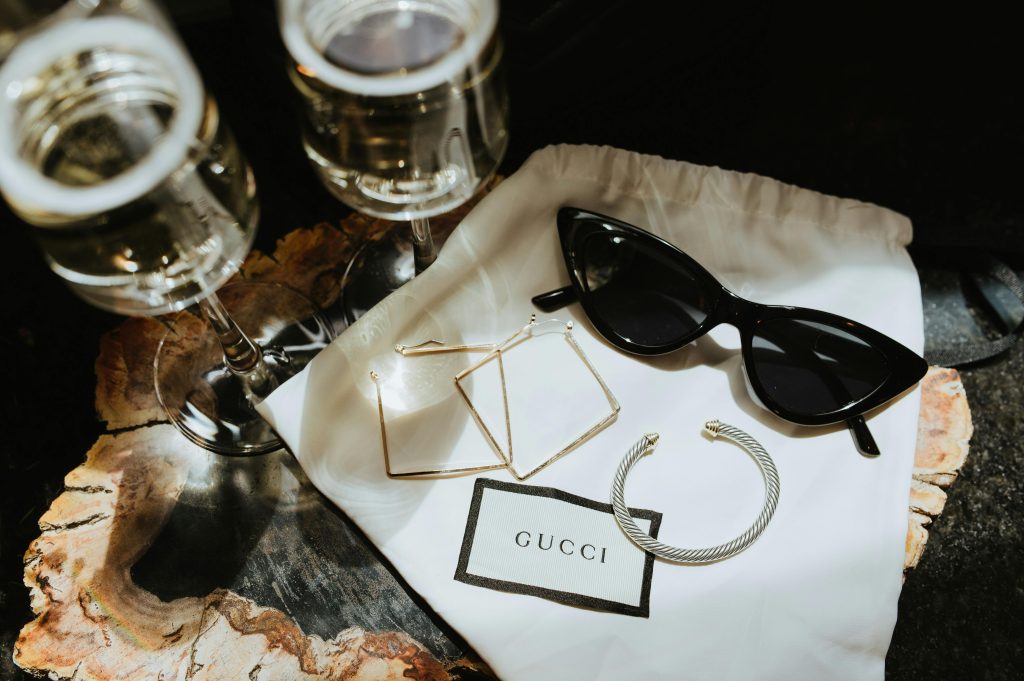Gucci vs. Dior: The Rebel vs. The Aristocrat in Luxury Fashion
The choice between Gucci and Dior represents a fundamental decision about your fashion identity. It’s a clash between two Italian and French powerhouses: the bold, eclectic maximalism of Gucci and the timeless, structured elegance of Dior. Both define luxury, but they speak entirely different visual languages.
This guide delves into the heritage, design philosophy, iconic products, and cultural resonance of both houses to help you determine which brand’s vision aligns with your personal style.
Gucci vs. Dior: A Snapshot
| Aspect | Gucci | Dior |
|---|---|---|
| Heritage | Italian, founded 1921. Equestrian and travel beginnings. | French, founded 1946. Post-war “New Look” elegance. |
| Design Philosophy | Maximalist, eclectic, romantic, and gender-fluid. | Timeless, structured, feminine, and refined. |
| Iconic Aesthetic | “More is more,” vintage-inspired, and daring. | “Haute Couture,” classic, lady-like, and polished. |
| Signature Prints/Marks | GG Supreme canvas, Web stripe, Tiger head | Cannage pattern, Toile de Jouy, Oblique (for Dior Men) |
| Brand Vibe | The Rebel: Creative, expressive, and intellectual. | The Aristocrat: Sophisticated, powerful, and eternally chic. |
1. Heritage and History: Equestrian Roots vs. The New Look
The founding stories of each brand created a DNA that persists today.
- Dior: Founded by Christian Dior in 1946 in Paris. The brand exploded onto the scene with the revolutionary “New Look” in 1947, which famously featured cinched waists, accentuated busts, and full, luxurious skirts. This was a direct reaction to the austerity of World War II, championing a return to opulence, ultra-femininity, and romance. Dior’s legacy is built on the foundations of haute couture, impeccable tailoring, and a defined, elegant silhouette.
- Gucci: Founded by Guccio Gucci in 1921 in Florence. Initially, the brand focused on fine leather goods and luggage for the horseriding and travel elite. Its early icons were influenced by the equestrian world, like the horsebit loafers and the green-red-green Web stripe. The brand’s modern identity was reignited by Creative Director Alessandro Michele (2015-2023), who embraced a maximalist, romantic, and intellectual vision that resonated with a new generation.
2. Design Philosophy: Maximalism vs. Tailored Elegance
This is the core of the difference between the two brands.
- Dior’s “Defined Femininity”: The Dior philosophy revolves around structure, precision, and timeless elegance. It’s about the architectural cut of a Bar Jacket, the perfect shape of a Lady Dior bag, and the sophisticated allure of the Cannage quiltting. The aesthetic is curated, polished, and designed to transcend seasons. It embodies a powerful, yet distinctly feminine and refined, luxury.
- Gucci’s “Inspired Chaos”: Under Michele, Gucci’s philosophy became one of eclectic maximalism and intellectual nostalgia. It’s a riot of vintage references from the ’70s and ’80s, bold animal prints, quirky accessories (like geek-chic glasses), and a deliberate, often ironic, clash of patterns and eras. The aesthetic is intellectual, romantic, and designed to be a conversation starter. It is fashion as self-expression and art, often blurring gender lines.
3. Iconic Products: The Hall of Fame
Both brands have created some of the most coveted objects in fashion.
- Dior Icons:
- Lady Dior Bag: The ultimate symbol of timeless elegance, famously carried by Princess Diana.
- Saddle Bag: The Y2K icon was resurrected by Maria Grazia Chiuri and remains a modern staple.
- Cannage Quilting: The diamond-stitch pattern inspired by Napoleon III chairs is a hallmark of Dior.
- Bar Jacket: The structured, waist-cinching jacket that defined the “New Look.”
- Gucci Icons:
- GG Marmont Bag: The matelassé leather bag with a double-G logo is a modern classic.
- Dionysus Bag: Defined by its tiger-head closure, it embodies Michele’s romantic mythology.
- Horsebit Loafer: The original icon from its equestrian roots.
- Jackie Bag: The iconic hobo bag, revived and modernized for a new era.
4. Price and Investment Value
Both are firmly in the luxury sector, but their value proposition has nuances.
- Dior often positions itself at the upper end of luxury, particularly for its classic handbags and haute couture offerings. The price reflects the meticulous craftsmanship, heritage, and timeless design that is meant to last for decades. Pieces like the Lady Dior are considered strong investment pieces.
- Gucci offers a slightly wider range of price points within the luxury bracket. While its leather goods are equally expensive, the brand has a strong presence in accessories, sneakers, and ready-to-wear that can be a more accessible entry point into the Gucci universe. The value is in its bold, statement-making designs.
The Final Verdict: Which Brand is For You?
Choose Dior if:
- Your style is classic, polished, and elegantly feminine.
- You value timelessness and investment pieces that will never go out of style.
- You appreciate structured silhouettes, haute couture history, and refined luxury.
- You are drawn to a powerful and sophisticated aesthetic.
Choose Gucci if:
- Your style is bold, expressive, and eclectic.
- You love mixing prints, vintage inspiration, and making a statement.
- You appreciate creativity, storytelling, and gender-fluid designs.
- You are drawn to pieces that are conversation starters and reflect a quirky, intellectual individuality.
Ultimately, Dior is the choice for the polished aristocrat, while Gucci is for the creative rebel. One represents the pinnacle of established elegance; the other, the forefront of imaginative expression. Both are pillars of luxury, but they cater to different souls.


